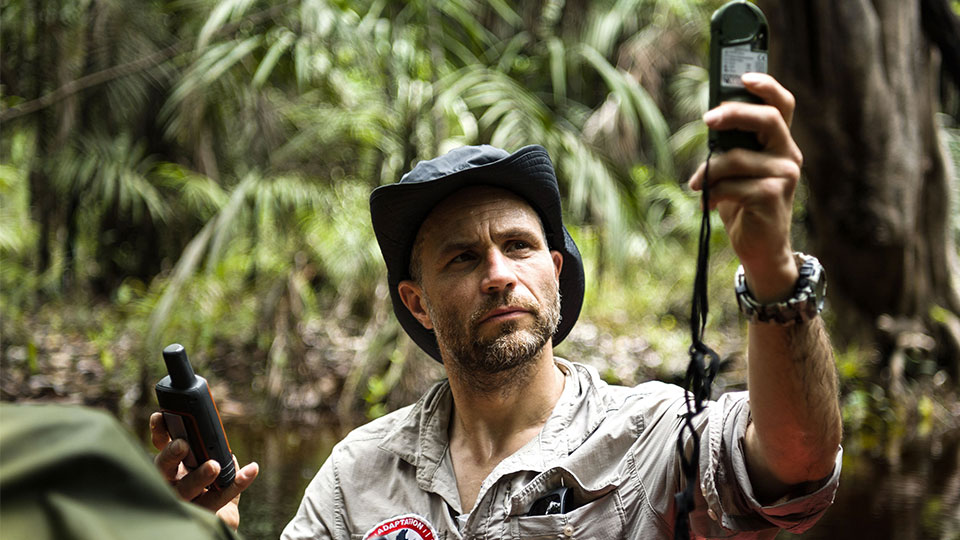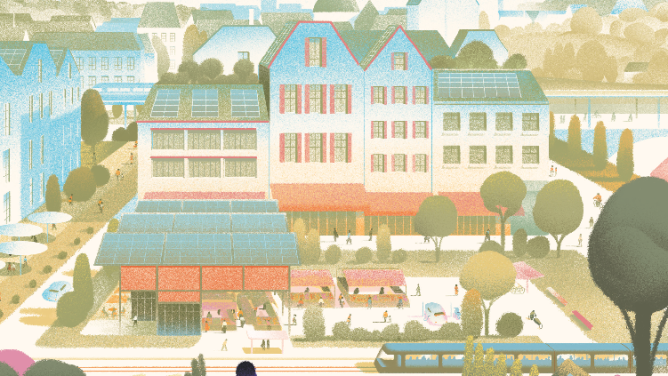How do you approach the issue of human adaptation?
The Human Adaptation Institute is an action research institute which carries out research expeditions. One of our latest expeditions was called Deep Climate. I led a group of 20 people into three different climates, each across a 40-day period. The different climates were very hot and dry, very hot and humid, and extremely cold. We wanted to understand the impact of climate change on human health, our cognitive capacities and our collaborative response. The participants are suddenly faced with new living conditions and we observe how they adapt to them.
What are the takeaways from which our society and communities could benefit?
The main lesson was that humans are capable of adapting and capable of change. This is good news because we are going to have to alter our behavior in order to reduce our carbon emissions. To achieve this, we need the right emotional impulses. Without them, it’s very difficult to initiate change. The second lesson is that much more can be achieved through cooperation. We observed that those who had no experience in hostile climates managed to cope very well thanks to solid teamwork. And last of all, we noticed that in order to adapt and consider the future, humans need sufficient cognitive space. They need to give their brains the time to imagine, to consider and think. In society today, our brains are overloaded, leaving no room for this necessary type of thought. If we want to build the future well, it’s important to limit the amount of information that we receive on a daily basis.

What do you mean when you talk about “emotional impulses”?
If you have never experienced extreme heat, it’s difficult to understand that you need to change your behavior today in order to avoid overheating tomorrow. Sensoriality plays a fundamental role. A large majority of charity organizations that fights against illnesses, poverty or famine were created by people who have faced these situations, either directly or indirectly through a family member. Action starts from an emotional experience.
Are we capable of adapting our behavior without having to sacrifice a certain level of comfort?
It all depends on your definition of comfort. Adaptation requires losing something to gain something else. Eating meat is representative of this. Eating less meat can have a rather significant impact on CO2 emissions and water consumption. You don’t need to eat meat to live well, but it requires a personal undertaking. You lose a certain level of comfort which can be made up for or recreated elsewhere, by creating other recipes, eating differently, or simply by realizing that we feel healthier.
You mentioned the importance of the collective. How can we increase the importance of this dimension in the context of adapting to environmental change?
This is a very complicated question, to which no one has a definitive answer. What is certain, however, is that our social and cooperative behaviors are set in early childhood. The education system and our early years of community life are fundamental. Cooperation arises from “working together” and the awareness of others. However, in most schools, there are relatively few group projects. We stay in line, one behind the other, with only the backs of our classmates in view. Change could come through simple transformations, such as reorganizing the classroom layout and putting pupils in a circle so that they can see one other.
Do you know any places where people have managed to change their lifestyles in response to climate change?
There is one country that has done an extraordinary effort and that’s Rwanda. After the 1994 genocide, the environment became a national value. For example, it was the first country in the world to ban single-use plastic in 1999. A lot of land regeneration efforts were carried out with local communities. The work done with the Nyungwe forest, which is the last high altitude tropical rainforest, is representative of this. In order to protect it and to avoid directly coming up against local poachers, local authorities offered some of them the opportunity to become game wardens. A “buffer zone” was also established around the Nyungwe forest, in which local communities can cut wood or hunt. This is collective intelligence at work: we can’t ban people from accessing nature, but we can find alternatives.
The city is a really important subject for us at Leonard. Do you have any examples of cities which are successfully adapting to climate change?
The city is a complicated subject. Some – like Singapore – are making considerable efforts. But perhaps we need to look to the past to find the best examples. Take the city of Yazd in Iran, which regularly hits temperatures of more than 50 degrees. The entire city was built to capture the wind using badgirs, which are passive wind capture systems. They are basically large towers into which the wind flows before coming into contact with a fountain or a river, which creates cool air that flows into homes. Pair this with fairly narrow and slightly shaded streets of loose earth, and the system allows the city to effectively regulate heat. These sort of passive solutions are still relevant today. Take Paris’ typical zinc roofs, for example, which are totally unsuitable for the heat and so some kind of radical solution is required, like removing the zinc altogether or painting the roofs white. However, this is currently impossible because they are listed for their architectural importance. But we are going to have to accept major changes in our cities, even if we do find them very pretty. It’s a whole mental schema that will have to change.


